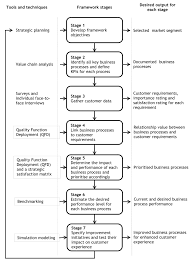The Art of Enhanced Customer Experience Design
In today’s competitive business landscape, providing a seamless and delightful customer experience is paramount to success. Enhanced customer experience design goes beyond just meeting expectations; it aims to exceed them by creating memorable interactions that leave a lasting impression on customers.
Understanding Customer Needs
Effective customer experience design starts with a deep understanding of the target audience. By conducting thorough research and gathering insights into customer preferences, behaviours, and pain points, businesses can tailor their products and services to meet specific needs.
Personalisation and Customisation
Personalisation plays a key role in enhancing the customer experience. By offering personalised recommendations, content, and communication based on individual preferences, businesses can create a more engaging and relevant interaction with their customers. Customisation takes personalisation a step further by allowing customers to tailor products or services to their liking.
Seamless Omnichannel Experience
In today’s digital age, customers interact with brands through multiple channels, both online and offline. Providing a seamless omnichannel experience ensures that customers can transition effortlessly between different touchpoints while maintaining consistency in messaging and branding.
User-Centred Design Principles
User-centred design puts the needs and preferences of users at the forefront of product development. By incorporating user feedback throughout the design process and testing prototypes with real users, businesses can create intuitive interfaces and experiences that resonate with their target audience.
Continuous Improvement and Feedback Loop
Enhanced customer experience design is an ongoing process that requires continuous improvement based on feedback from customers. By collecting data on customer interactions, analysing metrics, and soliciting feedback through surveys or reviews, businesses can identify areas for enhancement and make iterative changes to enhance the overall customer journey.
Conclusion
Enhanced customer experience design is not just a trend but a strategic imperative for businesses looking to differentiate themselves in a competitive market. By prioritising customer needs, personalising interactions, ensuring omnichannel consistency, following user-centred design principles, and continuously seeking feedback for improvement, businesses can create exceptional experiences that drive loyalty and advocacy among their customers.
Five Key Questions Explored: The Impact and Measurement of Enhanced Customer Experience Design
- What is enhanced customer experience design?
- Why is customer experience design important for businesses?
- How can personalisation enhance the customer experience?
- What role does user feedback play in customer experience design?
- How can businesses measure the success of their enhanced customer experience design efforts?
What is enhanced customer experience design?
Enhanced customer experience design refers to the strategic process of creating interactions and touchpoints that go beyond meeting customers’ expectations to deliver exceptional and memorable experiences. It involves understanding customer needs, personalising interactions, ensuring a seamless omnichannel journey, incorporating user-centred design principles, and continuously improving based on feedback. By focusing on enhancing every aspect of the customer journey, businesses can cultivate strong relationships with their customers and differentiate themselves in a competitive market.
Why is customer experience design important for businesses?
Customer experience design is crucial for businesses as it directly impacts customer satisfaction, loyalty, and ultimately, the bottom line. By prioritising the design of seamless and engaging interactions across all touchpoints, businesses can create positive emotional connections with their customers. This focus on enhancing the overall customer journey not only differentiates a brand from its competitors but also fosters long-term relationships with customers. Ultimately, investing in customer experience design leads to increased customer retention, higher conversion rates, and a stronger brand reputation in the market.
How can personalisation enhance the customer experience?
Personalisation plays a crucial role in enhancing the customer experience by tailoring interactions to individual preferences and behaviours. By leveraging data and insights gathered from customer interactions, businesses can deliver targeted content, recommendations, and offers that resonate with each customer on a personal level. This tailored approach not only increases engagement but also fosters a sense of value and connection, ultimately leading to improved customer satisfaction and loyalty. Personalisation creates a more meaningful and relevant experience for customers, demonstrating that their needs and preferences are understood and valued by the brand.
What role does user feedback play in customer experience design?
User feedback plays a crucial role in customer experience design as it provides valuable insights into the preferences, needs, and pain points of customers. By actively listening to and incorporating user feedback into the design process, businesses can create products and services that better align with customer expectations. User feedback not only helps in identifying areas for improvement but also guides decision-making towards enhancing the overall customer journey. Through continuous feedback loops, businesses can iterate on their designs, refine user experiences, and ultimately deliver more meaningful interactions that drive customer satisfaction and loyalty.
How can businesses measure the success of their enhanced customer experience design efforts?
Measuring the success of enhanced customer experience design efforts is essential for businesses to gauge the effectiveness of their strategies and initiatives. One common approach is through key performance indicators (KPIs) such as customer satisfaction scores, Net Promoter Score (NPS), customer retention rates, and conversion rates. By tracking these metrics over time, businesses can assess the impact of their customer experience design efforts on customer loyalty, engagement, and overall business performance. Additionally, qualitative feedback from customers through surveys, focus groups, and reviews can provide valuable insights into areas of improvement and help businesses refine their strategies to better meet customer expectations.

